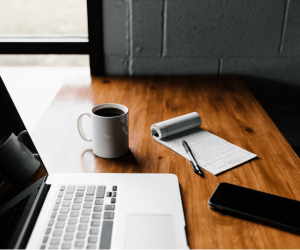A well-designed business environment is more than just an aesthetically pleasing space—it’s a critical element in driving productivity, creativity, and overall success. The physical setup of your workplace can significantly impact employee morale, collaboration, and efficiency. In this blog post, we’ll explore key aspects of designing a successful business environment, from office furniture to lighting, layout, and beyond. Whether you’re setting up a new office or revamping an existing one, these insights will help you create a space that fosters growth and success.

The Impact of Office Furniture on Productivity
Choosing the right office furniture is essential for creating a productive and healthy work environment. Ergonomic furniture, which is designed to support the body’s natural posture, can reduce the risk of musculoskeletal disorders and increase comfort. Chairs with adjustable height, lumbar support, and armrests, along with desks that accommodate various work styles, play a pivotal role in maintaining employees’ well-being. As the folks from Office Insight explain, beyond comfort, the aesthetics of office furniture can also influence mood and motivation. Sleek, modern designs can inspire a sense of professionalism and innovation, while warm, inviting pieces can make the office feel more welcoming. Investing in high-quality furniture is not just about functionality; it’s about making a statement that your business values its people and their comfort.
The Role of Natural Light in Workplace Efficiency
Natural light is a powerful element in office design that can enhance mood, energy levels, and productivity. Studies have shown that employees who work in environments with ample natural light experience less eye strain, headaches, and fatigue. Natural light also helps regulate circadian rhythms, which can improve sleep quality and overall health. To maximize natural light, consider installing large windows, skylights, and glass partitions. In spaces where natural light is limited, opt for artificial lighting solutions that mimic daylight. LED lights, for example, are energy-efficient and can be adjusted to different color temperatures to simulate natural light. By prioritizing natural light in your office design, you not only create a more pleasant working environment but also support the physical and mental well-being of your team.
Designing for Collaboration and Innovation
The layout of your office space can greatly influence how your team collaborates and innovates. Open-plan offices, which feature minimal barriers between desks, can facilitate communication and idea-sharing. However, it’s important to balance open spaces with private areas where employees can focus without distractions. Consider incorporating flexible workspaces, such as movable desks and modular furniture, that can be easily reconfigured for different tasks and team sizes. Additionally, dedicated brainstorming zones with whiteboards, comfortable seating, and collaborative tools can encourage creativity and problem-solving. By designing a versatile and dynamic workspace, you empower your team to work together more effectively and drive innovation.
The Importance of Personalization in the Workplace
Allowing employees to personalize their workspaces can have a significant impact on job satisfaction and performance. Personal items, such as family photos, plants, and artwork, can make employees feel more at home and reduce stress. Encourage your team to decorate their desks and create a space that reflects their personality and work style. Additionally, providing options for different types of workstations, such as standing desks, lounge areas, and quiet rooms, can cater to various preferences and needs. When employees have the freedom to customize their environment, they are more likely to feel valued and engaged in their work. Personalization fosters a sense of ownership and belonging, which can translate to higher motivation and productivity.
Integrating Technology for a Smart Office
In today’s digital age, integrating technology into your office design is essential for staying competitive and efficient. Smart office solutions, such as automated lighting and climate control systems, can enhance comfort and reduce energy costs. Wireless charging stations, high-speed internet, and collaborative software tools can streamline workflows and improve connectivity. Additionally, incorporating digital displays and interactive screens can facilitate presentations and meetings, making information sharing more dynamic and engaging. To create a truly smart office, consider implementing IoT (Internet of Things) devices that can monitor and optimize the use of office resources. By embracing technology, you create a modern, flexible, and efficient workspace that supports your team’s needs and drives business success.

Designing an effective business environment is a multifaceted process that requires careful consideration of various elements, from furniture and lighting to layout and technology. By prioritizing ergonomics, natural light, collaboration, personalization, and smart technology, you can create a workspace that not only looks great but also enhances productivity and well-being. As you plan and implement these design strategies, remember that the ultimate goal is to create an environment where your team can thrive and your business can grow. Investing in a well-designed office is an investment in your people and your future success.



